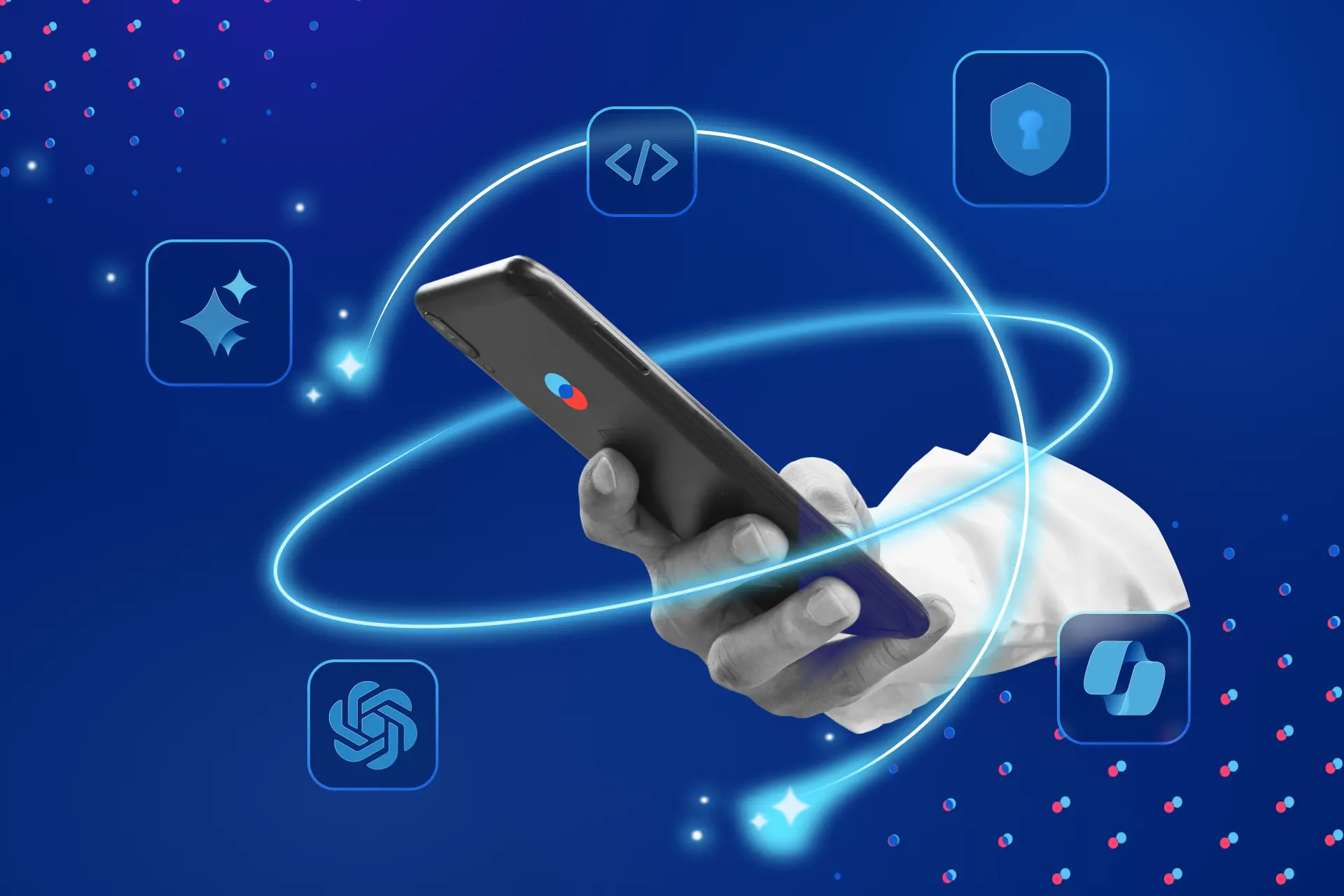Now more than ever, artificial intelligence (AI) is the talk of the town: it’s used for translating, writing, and generating images, and it’s becoming more commonly used than Google for finding answers. There’s a rush to incorporate it into practices. Although it’s an innovative and powerful tool, is it absolutely necessary for all digital experiences?
Today, artificial intelligence stands out as an opportunity to enhance an existing product and address a gap. But, as with any problem-solving, it’s essential to determine beforehand whether it’s truly the right solution or if there’s something better on the market.
Our expertise lies in designing custom digital experiences based on the best technologies, meticulously selected by our experts. This is the approach we advocate for every choice of complementary tool, including those in artificial intelligence: if we recognize the concrete benefits of its integration, our strategists will quickly draw the path towards its implementation. When the situation arises, we optimize our digital experiences with proven AI tools that offer recognized benefits.

A clear and detailed product vision is fundamental to guide our strategic decisions and ensure cohesion in the development of our projects. For integrating artificial intelligence into your project, this vision is even more necessary: it must not only support your business objectives but also reflect the needs and expectations of your users. That’s why we’ll also take the time to evaluate if integrating another tool could add even more value to your product more quickly and effectively.
Towards Thoughtful Integration
There are cases where artificial intelligence can find solutions to complex problems that traditional technologies struggle with. This includes natural language processing, semantic search, image analysis and recognition, fraud detection, and predictive analysis. However, the arrival of AI hasn’t made all recent technologies obsolete.
Even with a trained model, artificial intelligence can make mistakes. This is one of the major challenges of the technology, making us approach it thoughtfully. For example, we prefer the creative input of our design team to develop wireframes rather than using AI-assisted design tools, to guarantee a user experience that is truly customized and adapted to each project.
Artificial intelligence, like any digital tool, poses risks that an organization may choose to accept or not. Major concerns identified include copyright issues and the risk of information leakage. The OWASP has considered these risks in developing its guide on AI security and privacy, available on their website. This organization has also developed a specific guide for large-scale language model applications.
Other organizations are also planning to further regulate this technology, notably ISO (International Organization for Standardization), which is drafting the ISO/IEC AWI 27090 standard on artificial intelligence, expected in 2025.

There are times when a human may even be better suited than technology. This was our conclusion for the project suicide.ca in collaboration with AQPS when we discussed the possibility of conversational robots (“chatbots”). Although their progress and utility are recognized, a robot is not capable of meeting the needs and providing the necessary support to distressed individuals, in addition to being unethical.
Read also: Interview with Luc Massicotte: Multiplying Access Points for Suicide Prevention
Increasing Internal Productivity
The internal practices of various industries are already being transformed thanks to the adoption of artificial intelligence tools, such as ChatGPT for writing, translating, and revising texts, or Dall-E capable of instantly generating images. Among other things, they allow teams to increase productivity and focus more on strategy.
A similar evolution is observed in the field of software development with the arrival of GitHub Copilot, AWS CodeWhisperer, Codeium, or Tabnine, just to name a few. Increasingly popular and considered by many organizations, GitHub Copilot acts as a virtual assistant offering real-time suggestions to pre-fill lines of code and automate repetitive tasks, thus contributing to speeding up the coding process.
Although it can save time, it’s fundamental to question the potential use of your code by these artificial intelligence systems: could your code be integrated into their learning process and, inadvertently, be disclosed or suggested to other users? It’s also important not to take all recommendations for granted without verifying their origin, whether they violate copyright, or if they are secure to begin with.
"It is important for the company to establish an acceptable use policy for AI to ensure its proper use across different business lines. It's also necessary to ensure that these licenses are adapted to the number of employees in the company."
Regardless of the tool chosen to optimize practices, the watchword must be to consult cybersecurity experts to ensure their safety. They can guide you in defining their boundaries to prevent the risk of malware intrusion or leakage of confidential data.
It would not be wise to hastily adopt a new artificial intelligence tool for fear of “missing the boat.” If we identify it as an opportunity for your product, our experts will ensure to consider and limit the risks of its implementation. Our priority is always to lead your project with the greatest efficiency and offer your users the best digital experience on the market… whether it’s based on artificial intelligence or not.






